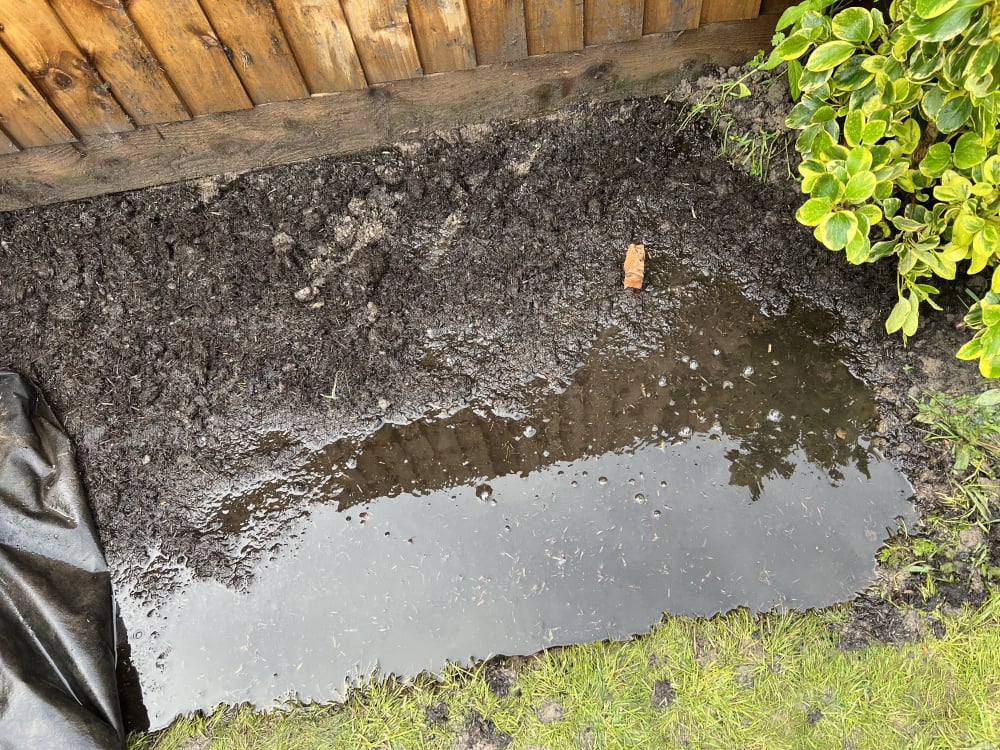This Forum will close on Wednesday 27 March, 2024. Please refer to the announcement on the Discussions page for further detail.
Flower beds flooding
We have clay soil which has been drowning our plants so we dug out all the clay, replaced with grit, manure and compost and the bed is still flooding!! Can anyone suggest anything we can do or what we can do with this section of the garden? We were wanting to solve our beds so we can have plants and trees for privacy but it’s just so damp!
We covered it with a sheet  after replacing the soil and this is underneath the sheet.
after replacing the soil and this is underneath the sheet.
 after replacing the soil and this is underneath the sheet.
after replacing the soil and this is underneath the sheet. 0
Posts
What have your neighbours got? Look for some othe cause.
"Have nothing in your garden that you don't know to be useful, or believe to be beautiful."
Gardening in Central Norfolk on improved gritty moraine over chalk ... free-draining.
If you can manage to get a bit better drainage, the native evergreens like holly and juniper will be OK. I think there are some varieties of spruce that will tolerate wet feet - they are all quite big though - how much room do you have?
“It's still magic even if you know how it's done.”
Top 30cm yellow London Clay; below that, all sorts of rubbish; below that well-matured dark top-soil based on ex-woodland LOndon Clay but smelling very anaerobic.
First step: dig over 2 spits' deep and sort into the various components. Rearrange these components at the levels required.
I never looked back.
"Have nothing in your garden that you don't know to be useful, or believe to be beautiful."
Clay is actually the best medium for growing plants, as long as it's amended. A good amount of rotted manure/compost and any other organic matter added to it would have done the trick if done 6 months ago or so. I agree that you've possibly just created a sump now by removing the soil.
Grit is pointless in a border as you would need tons and tons of it to make any real difference.
As said - plants don't thrive in permanently wet soil unless they're pond plants. Willow is about the only thing that will tolerate wet soil on a consistent basis, but isn't practical unless you have a very large plot. Even bog plants need drainage and air around the roots, and that's where the organic matter comes in.
An 'actual' raised bed is another solution, but it depends on budget and what size the plot is etc.
However, have you checked that there isn't a high water table or similar in the area?
I live in west central Scotland - not where that photo is...